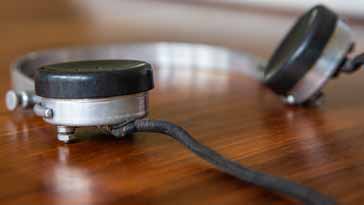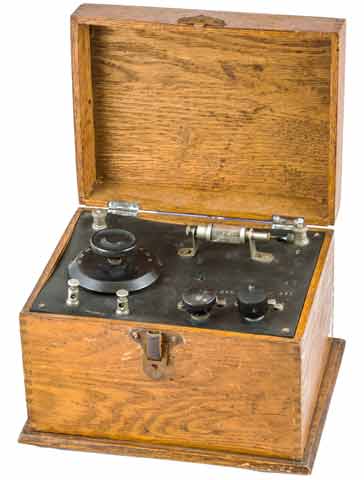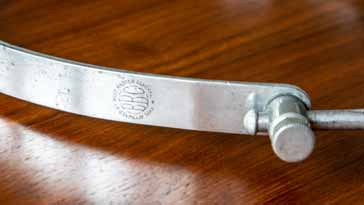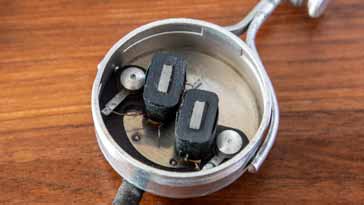S G Brown Type F Headphones
In the early days of wireless when crystal sets were the main type of radio used, headphones like these S G Brown Type F ones were an essential part of the radio receiver set up
Radio Receiver History Includes:
Radio history / timeline
Radio receiver history
Superhet radio history
Classic vintage radio receivers
During the 1920s when broadcasting was in its infancy, crystal set radios were the only viable form of radio receiver.
To hear the broadcast sounds the only viable form of transducer was really a pair of headphones like these S G Brown Type F headphones.
The S G Brown Type F headphones were produced in very large quantities and used with a large number of vintage radio sets.

Type F headphones basic description
These vintage S G Brown Type F headphones were designed in the early 1920s for use with crystal radio sets, although they were later employed with many other vintage radios including the later valve radios.

Each earpiece had an impedance of 2000 Ω and as they were wired in series, this gives an overall impedance of 4000Ω
This high level of impedance was required because the crystal sets required a high impedance load in view of their circuitry and operation.
Type approval mark
The particular set of headphones shown has a type approval mark on the headbands. These type approval marks were required for wireless receiving equipment in the United Kingdom between 1922 and 1924. Not only was it required that they were made in the United Kingdom, but that they performed satisfactorily.
The type approval was primarily required for the radios themselves. Before entering into production, a sample of the radio had to be submitted to the Post Office to check that it performed in accordance with the requirements of the day. In particular it was important that it did not radiate too much. Once passed they were given a registration number and all sets bore the relevant mark.
Accessories such as valves, headphones and loudspeakers also had to be of British manufacture and made by a member firm which was a member of the B.B.C. While these accessories were not tested nor given G.P.O. registration numbers, they did have to bear the BBC/PMG stamp.
The stamp on these S G Brown Type F headphones conforms to the requirements of the day and reads: "Type Approved By Post Master general" and it carries the letters BBC.
The fact that it carries the stamp indicates that the headphones were manufactured during the currency of this scheme, i.e. between 1922 and 1924.

Inside the earphones
It is possible to easily unscrew the earphone covers. This should be done carefully as the plastic is over 100 years old in some cases. The diaphragm can then be carefully slid off the assembly to reveal the inside.

The wound coils on their formers can be seen along with the internal wiring.
When re-assembling this part of the headphones, the diaphragm should again be slid across te assembly and centred on the outer metal housing. The earphone cover can ten be carefully screwed back in place. Care must be taken not to get the threads cross threaded as the screw tread itself on the aluminium housing is not continuous and it is very easy to cross thread them.
These S G Brown Type F headphones are rather basic and the audio from them is not what we would expect today. Nevertheless, in their day they provided a good level of performance and as such they were widely used with early crystal sets and then with many other forms of vintage radio.
 Written by Ian Poole .
Written by Ian Poole .
Experienced electronics engineer and author.
More History:
Radio history timeline
History of the radio
Ham radio history
Coherer
Crystal radio
Magnetic detector
Spark transmitter
Morse telegraph
Valve / tube history
PN junction diode invention
Transistor
Integrated circuit
Quartz crystals
Classic radios
Mobile telecoms history
Vintage mobile phones
Return to History menu . . .


